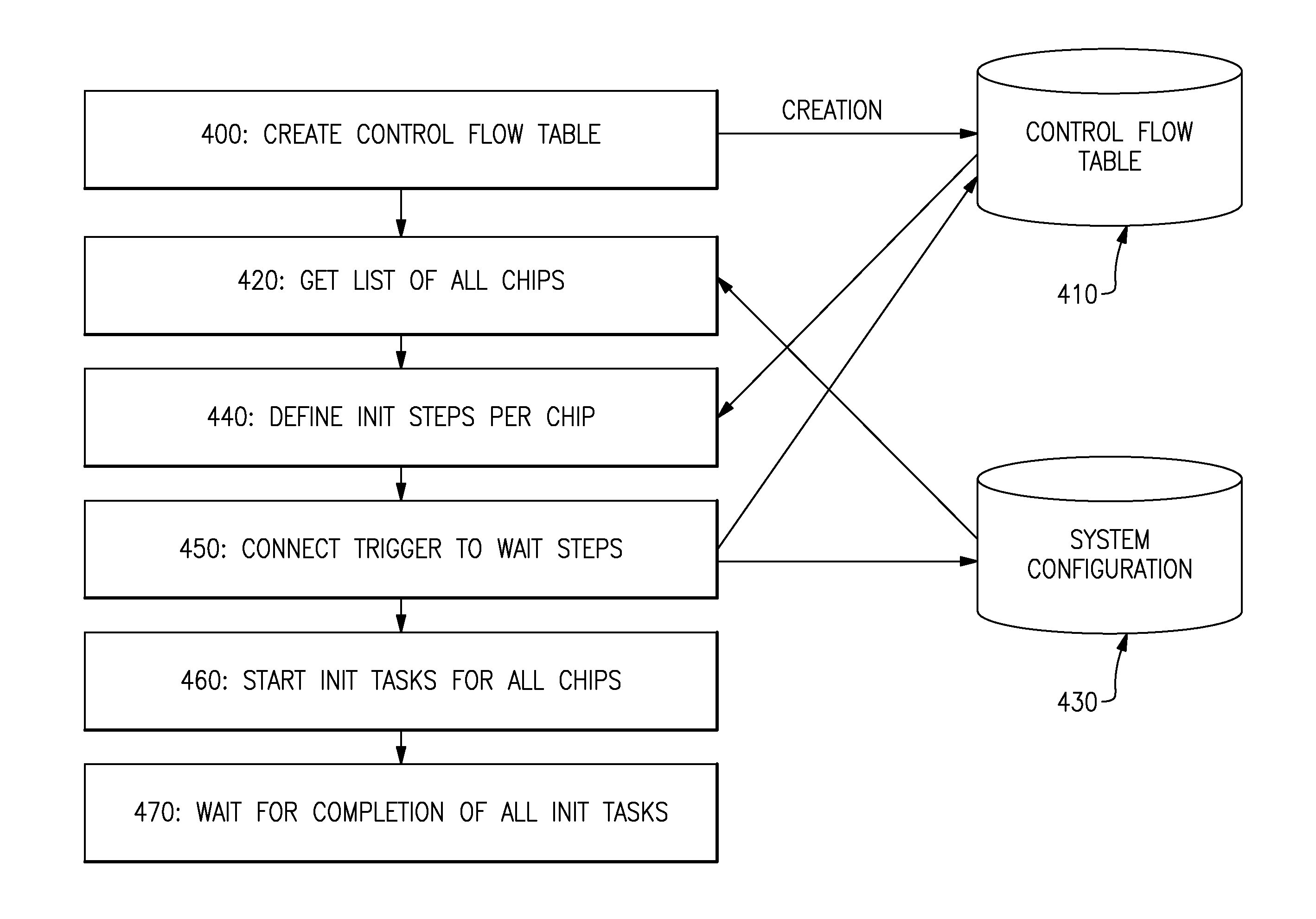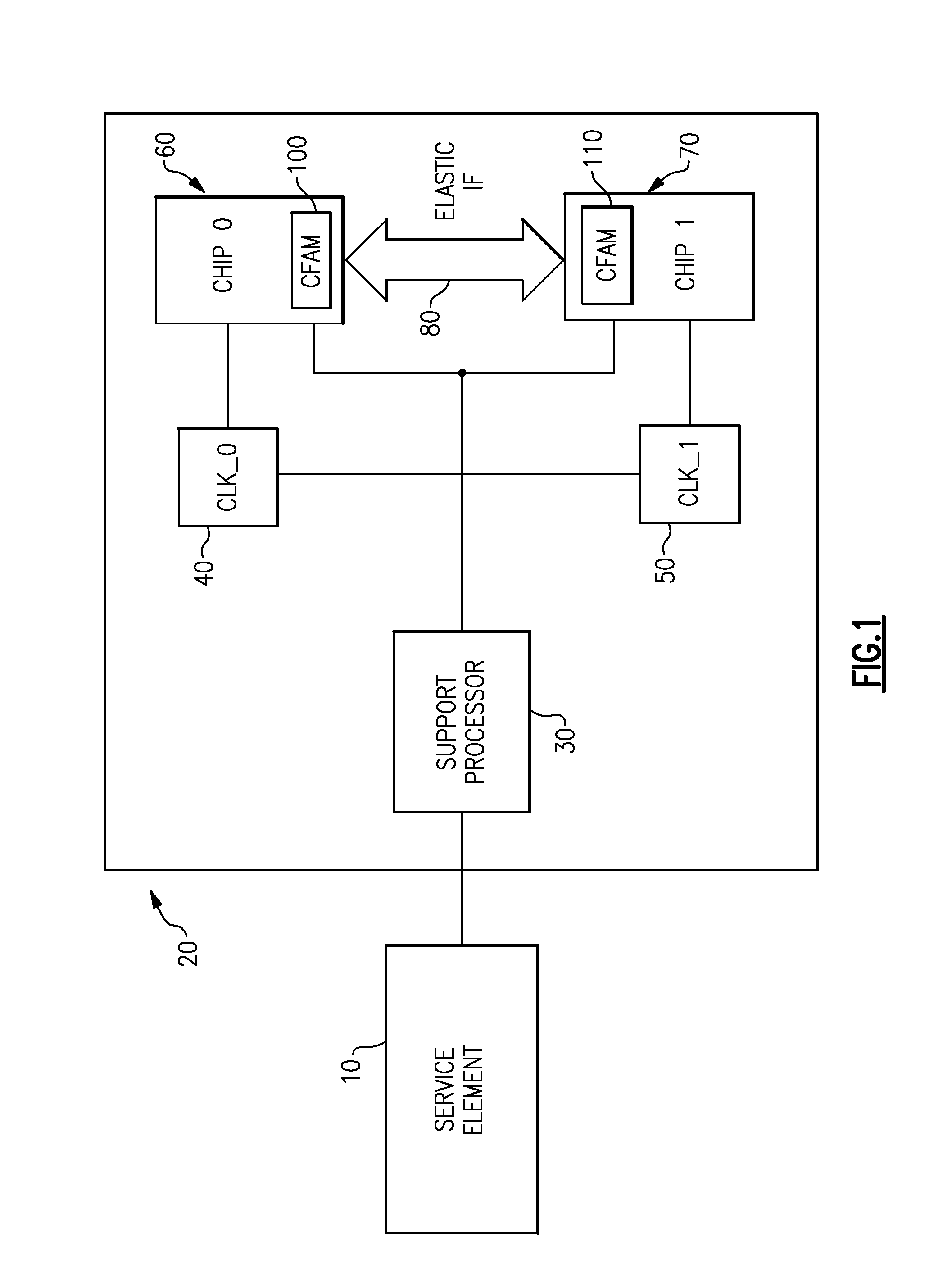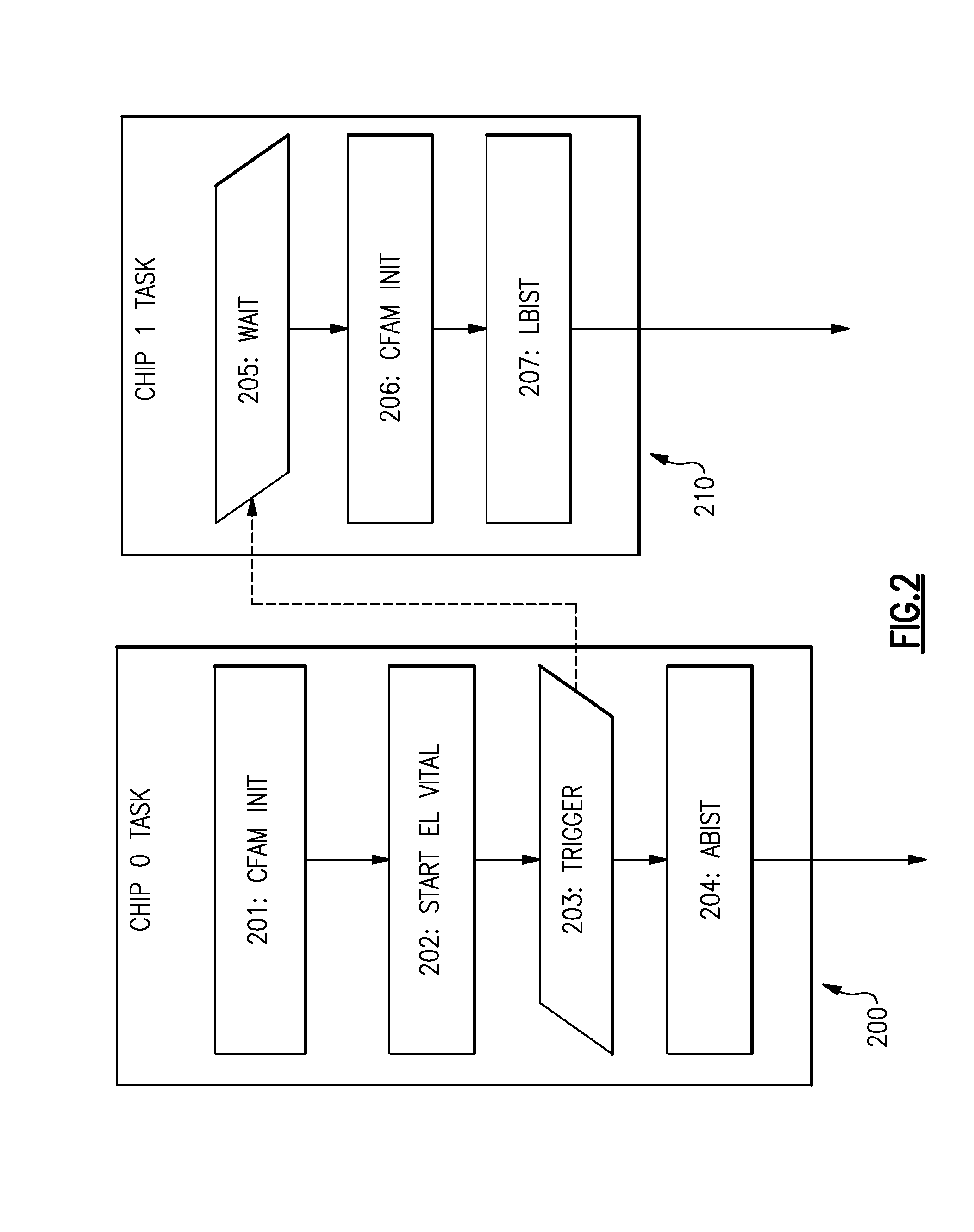Initialization of a Data Processing System
a data processing system and initialization technology, applied in the direction of program control, multi-programming arrangement, instruments, etc., can solve the problems of time-consuming control of these chips, large computer systems, and possible redundant service control networks
- Summary
- Abstract
- Description
- Claims
- Application Information
AI Technical Summary
Benefits of technology
Problems solved by technology
Method used
Image
Examples
Embodiment Construction
[0025]FIG. 1 illustrates a system control structure for a subsystem of a computer system used for an embodiment of the present invention. A service element 10 controls a node 20 of the computer system. For example, the node 20 could be a rack-mountable cage for an industry standard (EIA 310-D, IEC 60297 and DIN 41494 SC48D) 19-inch rack. The node 20 houses a support processor 30, which is responsible for the system management of the node 20. The support processor 30 is connected to the service element 10, e.g. via a private system control service network based on Ethernet technology. An example of service element 10 is a personal computer, e.g., an IBM ThinkPad. The service processor 30 can be implemented as an ASIC (Application Specific Integrated Circuit), e.g., the IBM eServer z900 cage controller ASIC (e.g., FIG. 7 in Batinger et al. cited above). A detailed implementation description for such an ASIC is given in J. Saalmueller / J. Wuertz “Embedded Controllers for solving complex...
PUM
 Login to View More
Login to View More Abstract
Description
Claims
Application Information
 Login to View More
Login to View More - R&D
- Intellectual Property
- Life Sciences
- Materials
- Tech Scout
- Unparalleled Data Quality
- Higher Quality Content
- 60% Fewer Hallucinations
Browse by: Latest US Patents, China's latest patents, Technical Efficacy Thesaurus, Application Domain, Technology Topic, Popular Technical Reports.
© 2025 PatSnap. All rights reserved.Legal|Privacy policy|Modern Slavery Act Transparency Statement|Sitemap|About US| Contact US: help@patsnap.com



